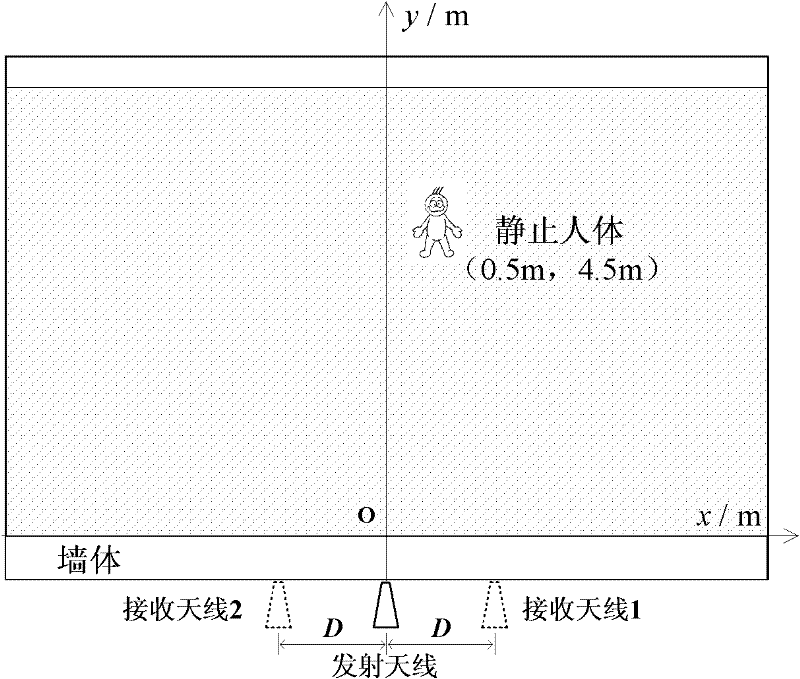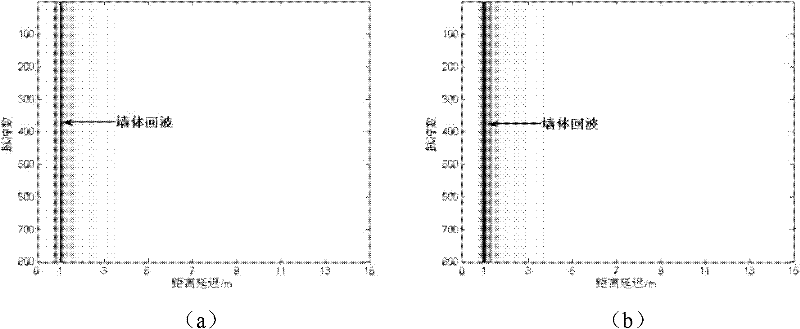Method for locating static human body through wall based on respiratory character
A positioning method and human body technology, applied in the field of radar detection, can solve the problems of human image defocus and image signal-to-noise ratio reduction, limited image defocus suppression effect, and no conditions for multi-view detection, so as to eliminate distance delay blurring , to ensure the effect of high estimation accuracy and high positioning accuracy
- Summary
- Abstract
- Description
- Claims
- Application Information
AI Technical Summary
Problems solved by technology
Method used
Image
Examples
Embodiment Construction
[0032] A specific embodiment of the present invention is given below in conjunction with a typical experimental example.
[0033] The scene diagram of the static human positioning experiment through the wall is as follows: figure 2 As shown, the wall-penetrating radar system uses a dielectric antenna with one transmitter and two receivers. The distance between the transmitter and receiver antennas is 0.5m. The transmitted signal is a continuous wave signal with a step frequency of 1GHz to 2GHz. A single stationary human body is at (1.0m, 4.5m). The two receiving antennas collect 800 step-frequency pulse echo signals in total. The wall is made of ordinary clay brick wall with a thickness of 24.5cm.
[0034] According to the processing steps of the present invention, the first step is to carry out signal preprocessing including resampling, direct current removal and IFFT pulse pressure for the step frequency echo signals of the two receiving antennas to obtain two fast and slow...
PUM
 Login to View More
Login to View More Abstract
Description
Claims
Application Information
 Login to View More
Login to View More - Generate Ideas
- Intellectual Property
- Life Sciences
- Materials
- Tech Scout
- Unparalleled Data Quality
- Higher Quality Content
- 60% Fewer Hallucinations
Browse by: Latest US Patents, China's latest patents, Technical Efficacy Thesaurus, Application Domain, Technology Topic, Popular Technical Reports.
© 2025 PatSnap. All rights reserved.Legal|Privacy policy|Modern Slavery Act Transparency Statement|Sitemap|About US| Contact US: help@patsnap.com



